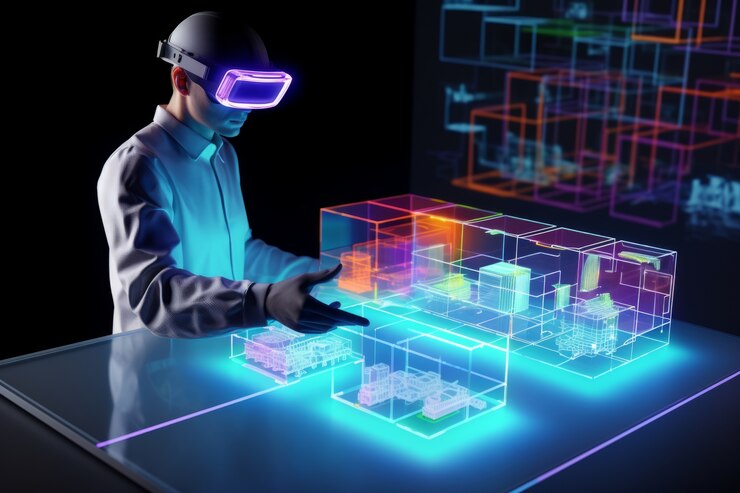Introduction
The self-storage industry has evolved significantly over the past few decades, adapting to changing consumer needs and technological advancements. One of the most exciting and innovative developments in recent years is the integration of augmented reality (AR) into the self-storage experience. As technology continues to advance, AR offers unique opportunities to enhance customer engagement, streamline operations, and provide a more interactive and efficient storage solution. This article explores the role of augmented reality in the self-storage industry, examining how it is transforming the way customers interact with storage spaces and how businesses can leverage AR to improve their services.
Understanding Augmented Reality in Self-Storage
“Augmented reality (AR) is a technology that overlays digital information, such as images, videos, or data, onto the real world, enhancing the user’s perception of their environment. Unlike virtual reality (VR), which creates a completely immersive digital environment, AR enhances the physical world by adding interactive elements that can be accessed via smartphones, tablets, or AR glasses.
In the context of self-storage, AR can be used to enhance the customer experience by providing virtual tours, interactive guides, and real-time information about storage units. For example, a customer could use their smartphone to view a storage unit in augmented reality, allowing them to see how their belongings would fit within the space or visualize different storage configurations before making a decision. AR can also be used to provide detailed information about the facility, such as available unit sizes, pricing, and security features, all within an interactive, 3D environment.” – D’Arcy Hunter, President and CEO of Find Storage Fast
Enhancing the Customer Experience with AR
One of the most significant ways AR is transforming the self-storage industry is by enhancing the customer experience. The traditional process of renting a storage unit often involves multiple visits to different facilities, comparing unit sizes, and trying to visualize how belongings will fit into the available space. AR simplifies this process by allowing customers to interact with storage units in a more intuitive and engaging way.
1. Virtual Tours and Interactive Previews
AR technology enables customers to take virtual tours of storage facilities from the comfort of their own homes. By using a smartphone or tablet, potential renters can explore different storage units, view available spaces in 3D, and get a sense of the layout and dimensions. This interactive experience helps customers make more informed decisions without the need for physical visits, saving time and effort.
For instance, a customer looking to store furniture can use AR to visualize how their couch, bed, or dining table will fit within a specific unit. They can also experiment with different arrangements and see how much additional space is available for other items. This level of interactivity and customization is not possible with traditional 2D floor plans or photographs, making AR a valuable tool for enhancing the customer experience.
2. Real-Time Inventory Management
AR can also play a crucial role in helping customers manage their storage inventory in real-time. By tagging items with AR markers or QR codes, customers can create a digital inventory of their stored belongings, which can be accessed and updated via a smartphone app. This allows customers to know exactly what is in their storage unit at any given time, reducing the risk of lost or misplaced items.
Additionally, AR can assist customers in organizing their storage units more efficiently. For example, by using AR, customers can see suggested arrangements for maximizing space utilization or receive recommendations on how to stack or store items to prevent damage. This real-time feedback helps customers optimize their storage space and ensures that their belongings are stored safely and securely.
Streamlining Operations with AR
In addition to enhancing the customer experience, AR can also streamline operations for self-storage businesses. By integrating AR into their facilities, storage companies can improve efficiency, reduce costs, and offer more personalized services to their customers.
1. Maintenance and Facility Management
AR can be a valuable tool for facility management, allowing staff to visualize and manage the infrastructure of the storage facility in real-time. For example, maintenance staff can use AR glasses to overlay digital information on physical equipment, such as HVAC systems, security cameras, or lighting fixtures. This information can include maintenance schedules, repair histories, and real-time diagnostics, enabling staff to identify issues quickly and perform repairs more efficiently.
AR can also be used to monitor the overall condition of the facility, providing real-time alerts if issues such as water leaks, temperature fluctuations, or security breaches are detected. This proactive approach to facility management helps ensure that storage units remain in optimal condition and reduces the likelihood of disruptions to customer service.
2. Employee Training and Support
Training employees to manage and operate a self-storage facility can be time-consuming and costly, especially when it comes to learning about the complex systems and processes involved. AR can simplify employee training by providing interactive, on-the-job training modules that guide employees through various tasks in real-time.
For example, new employees can use AR to receive step-by-step instructions on how to operate security systems, manage customer accounts, or perform routine maintenance tasks. AR can also provide real-time support by overlaying troubleshooting information on equipment or systems, helping employees resolve issues quickly and effectively. This approach to training not only reduces the learning curve for new employees but also ensures that all staff members have access to the information they need to perform their jobs efficiently.
Marketing and Sales Opportunities with AR
AR also presents exciting opportunities for marketing and sales within the self-storage industry. By leveraging AR, storage companies can create more engaging and interactive marketing campaigns that resonate with potential customers and differentiate their services from competitors.
1. Interactive Advertising
AR can be used to create interactive advertising campaigns that capture the attention of potential customers and provide them with a more immersive experience. For example, a storage company could launch an AR-enabled ad campaign that allows users to visualize how their belongings would fit into different storage units or see before-and-after images of organized storage spaces.
These interactive ads can be distributed via social media, websites, or mobile apps, making it easy for potential customers to engage with the brand and explore the services offered. By providing a more personalized and engaging experience, AR advertising can help drive conversions and increase customer acquisition.
2. Enhancing Online Presence
“In an increasingly digital world, having a strong online presence is essential for attracting and retaining customers. AR can enhance a storage company’s online presence by providing interactive features on their website or mobile app. For example, customers could use AR to take a virtual tour of the facility, explore available storage units, or even visualize how their belongings would fit into a unit in real-time.
By integrating AR into their online platforms, storage companies can offer a more dynamic and engaging experience for their customers, setting themselves apart from competitors and increasing the likelihood of converting website visitors into paying customers.” – Justin Carpenter, franchise owner of Modern Maids Houston
The Future of AR in Self-Storage
As AR technology continues to advance, its applications in the self-storage industry are expected to expand even further. Future developments may include more sophisticated AR tools for inventory management, enhanced facility management systems, and even fully immersive AR experiences that allow customers to interact with storage units in new and innovative ways.
Additionally, as more consumers become familiar with AR technology through popular apps and devices, the demand for AR-enhanced services is likely to grow. Storage companies that invest in AR now will be well-positioned to meet this demand and provide a superior customer experience.
Conclusion
Augmented reality is revolutionizing the self-storage industry by enhancing the customer experience, streamlining operations, and creating new marketing opportunities. By integrating AR into their services, storage companies can offer more interactive, personalized, and efficient solutions to their customers, setting themselves apart in a competitive market. As AR technology continues to evolve, its role in the self-storage industry is likely to expand, providing even more opportunities for innovation and growth. For storage businesses looking to stay ahead of the curve, embracing AR is not just an option—it’s a necessity for thriving in the digital age.





Leave a Reply